Growing from seed is both challenging and very rewarding. One of the main reasons to grow from seed is because you can choose the specific varieties for your garden, rather than being limited by what is offered at the nursery.
Additionally, it can be cost effective to grow from seed if you plan to garden for multiple years.
If you don’t already own seed starting equipment, it is important to know the equipment needed to grow strong, healthy seedlings. There are ways to do it for less but the quality of the seedlings and the level of success will be much less than if you invest in proper equipment.
If you wish to grow from seed you will want to be committed to growing for multiple years to make the investment make sense. To learn more about the equipment needed to grow from seed we encourage you to read our comprehensive guide here.
If you are new to seed starting and want to learn more, check out the full list of seed starting guides we have:
- How to Pick The Best Plants for Your Garden
- Avoid These 8 Mistakes When Starting from Seed
- 8 Easy to Grow Seeds for the Beginner Gardener
- How to Make Peat-Free Seed Starting Soil
- What You Need to Grow Your Own Seeds Indoors
As you read through this article, we will show you 3 different seed companies and the information that they contain on their package. Seed companies differ in the information that they provide, so we will take you through the important criteria, and how to find the information if the seed packet does not provide it.
There are so many great Canadian seed companies out there. Seeds of Diversity maintains a list of Canadian seed companies, so if you wish to support local we highly recommend checking out their seed company list here. The three companies highlighted in this article are ones that we have purchased and planted from and they are:
In this article, we will discuss the 6 main parts of a seed packet. Once we review the 6 main parts we will look at the 3 different seed companies and show examples on how to read each of them.
There are 6 main parts to the seed packet that you will want to be familiar with.
- Photo and Description: Depending on the company, the packet will have a photo, a drawing or no picture of the plant on it. Also, a small description on the origins, flavour or other features are generally present on the packet.
- Days to Maturity: This number is extremely important to know, especially before buying the seeds. This is the number of days required for the fruit to mature where it is able to be harvested. When the seeds are started indoors, the days to maturity is related to the date that the seedling is planted outside, not when the seed is planted indoors. It is important to understand your growing zone and the number of frost free days in your zone. If you are unsure of your growing zone, you can find your plant hardiness zone here on the Government of Canada website.
- Timing: This is the time of when to start your seeds indoors. Generally the packet will list the time based on your last frost, so it is important to know the date of your last frost.
- Seeding: This section of the seed packet gives all of the important information about planting the seed. This includes the planting depth, the light requirements (ie some seeds require total darkness, while others need light), time to germination/sprouting, and any other special requirements the seeds might need. This includes using a heat mat, soaking the seed before planting it, or stratifying it (which could mean scuffing it up with sandpaper, or putting it in the fridge for a few weeks before planting).
- Growing or Care: This section discuses how to care for the plant once the seed has germinated; such as watering or fertilizer requirements.
- Seed Specs/Life: This section might appear at the front or back of the packet, or even on the flap. This information includes the germination rate (what % of seeds will germinate), number of seeds in the pack, the quality of the seeds, what year it was packed and how long the seed shelf life is (or best before date).
Let’s look at a few different seed packets to identify the above mentioned information.
Get more gardening advice straight to your inbox
West Coast Seeds
The first seed packet is from West Coast Seeds. All 6 criteria areas are present on this seed packet and overall this seed packet does a really good job of providing the planting information.
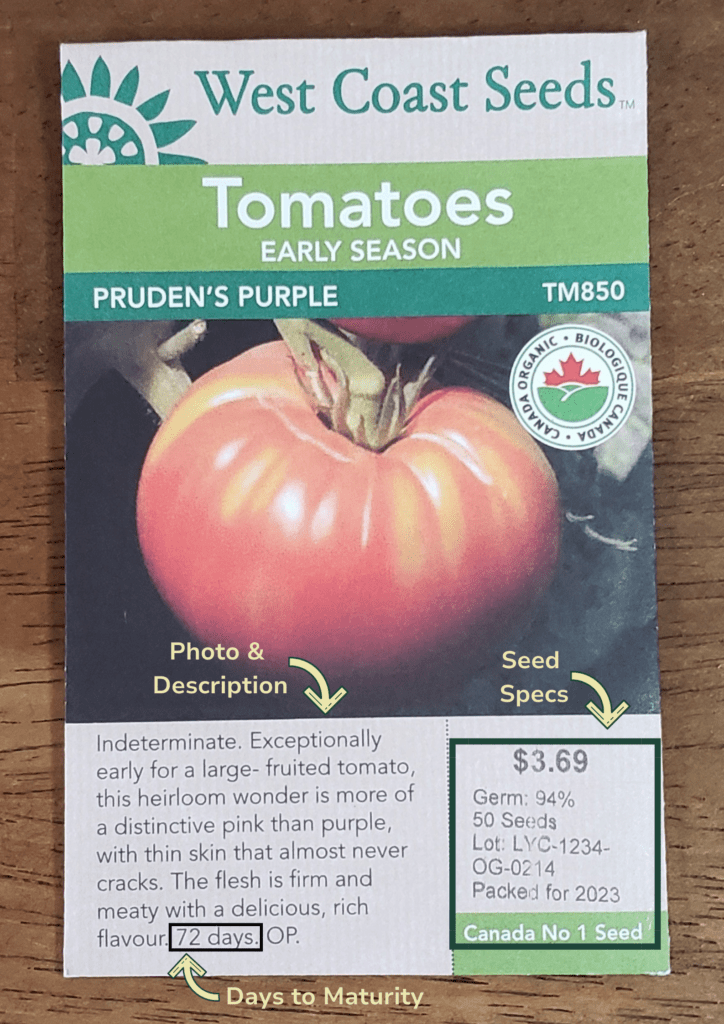
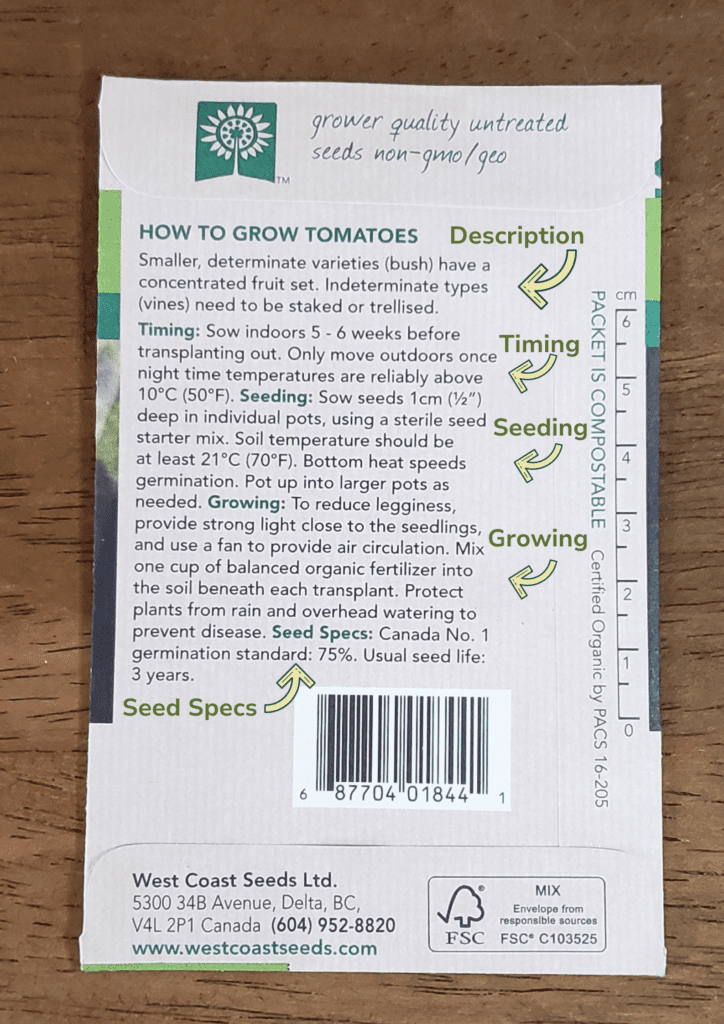
Two items to note:
- This seed packet does not mention days to germinate. This information is really helpful to determine if the seeds are successful. For example, if days to germinate is 5 days and it has been 10 days since you planted the seeds, you will likely want to plant a second round of seeds.
- Some seed packets include planting instructions when it is time to plant outside, ie how far to plant apart, when to harvest which is not included on these packets.
Knowing this information, you will want to research the days to germinate and how to plant outside to ensure planting success.
William Dam Seeds
Next is a seed packet from William Dam. Similar to West Coast Seeds, this seed packet also touches on all 6 criteria.
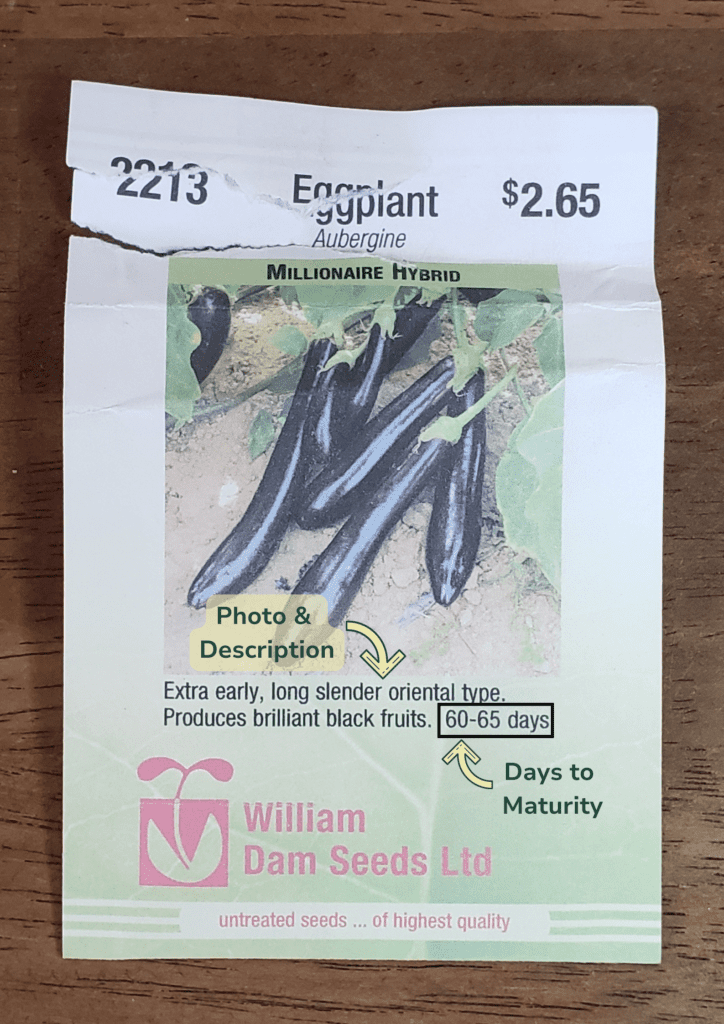
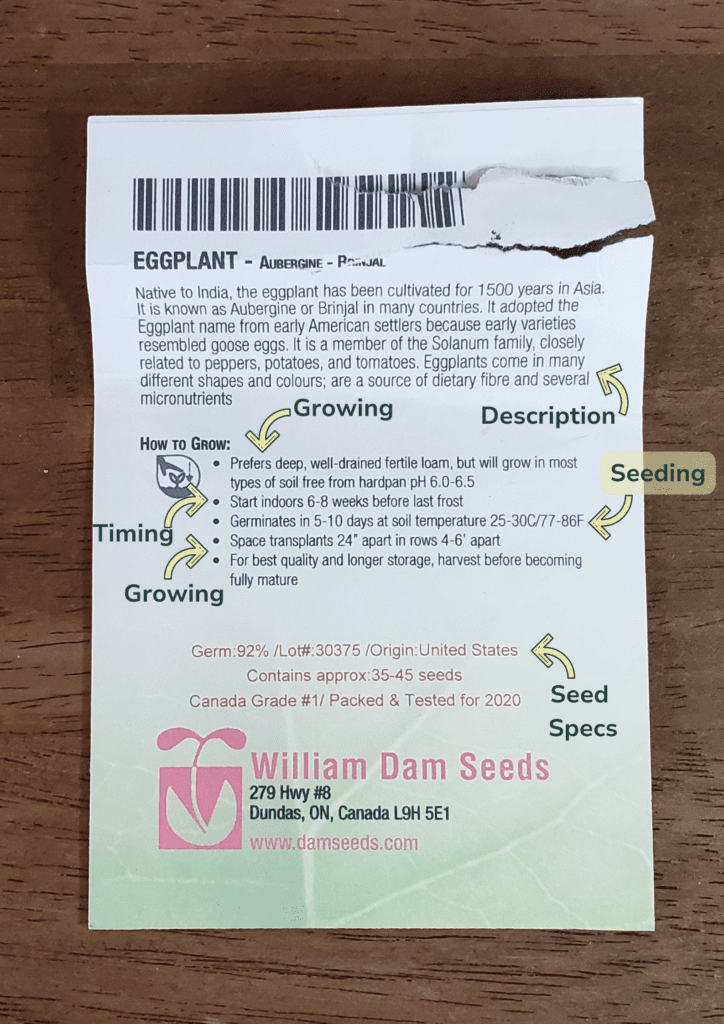
One item to note:
- This seed packet does not provide a lot of information under Seeding. When it mentions the soil temperature of 25-30°, to get to that temperature indoors you will need a heat mat. Additionally, it makes no mention of the depth to plant the seeds.
You will need to research the seed depth if it is not mentioned, like above. By reviewing the criteria listed at the top of this article, you can compare it to the seed packet to determine if any information is missing, so you know what to research related to that specific seed variety.
The Incredible Seed
The final seed packet is from The Incredible Seed. This seed packet has very clear instructions, however there are a few main items missing from the packet.
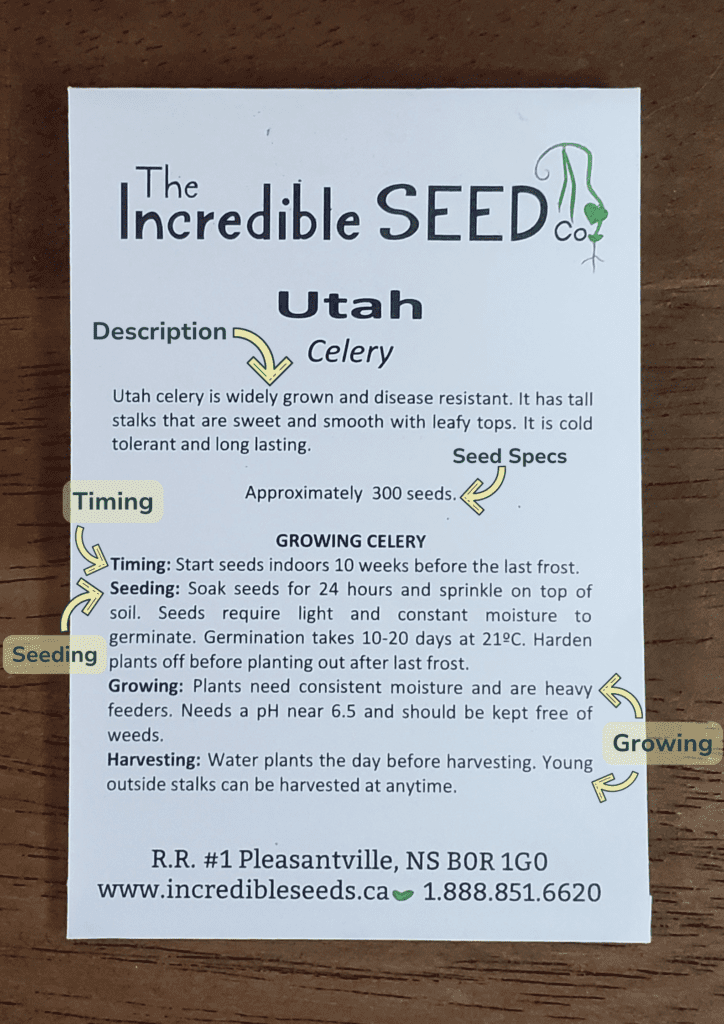

Items to note:
- There is no picture of the vegetable on the packet which is not a major issue but it is nice to be reminded of the variety that you own by seeing the photo
- Days to Maturity is missing on the seed packet. This information is really important because if the days to maturity is higher than the frost free days then you won’t be able to grow this in your garden.
- The Seeding section is very well done, with clear and detailed instructions on how to plant and what to expect.
- The Seed Specs information is missing, beyond the number of seeds. The year that the seeds were packed, and the germination rate are missing. The year the seeds were packed is important for you to remember the year you bought the seeds to understand their age and viability. The germination rate is important so you can understand how many of the seeds that you have planted should sprout.
If you are new to growing from seed, this may feel overwhelming at first. However, if you refer back to the 6 criteria at the top of this article it will help guide you while reading your seed packets. Like everything, it takes time to be successful. But as you begin growing from seed you will start to understand the needs of the different plants. Overall, gardening is a continuous learning process. Whether this is your first year growing from seed, or your fifth, it is a guarantee you will continue to learn something new every year.
If you want to continue learning more about growing from seed, check out our other articles:
- How to Pick The Best Plants for Your Garden
- 8 Easy to Grow Seeds for the Beginner Gardener
- What You Need To Grow Your Own Seeds Indoors
- Avoid These 8 Mistakes When Starting from Seed









